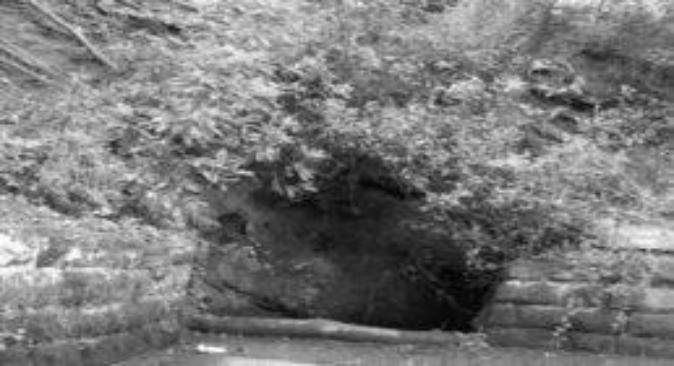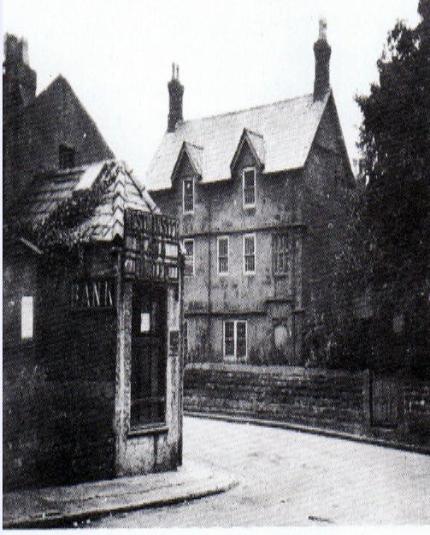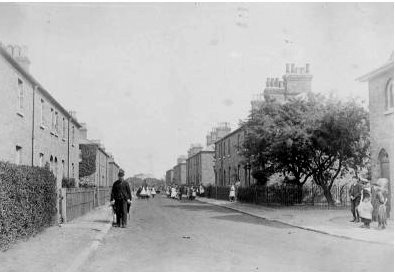






| MENU |


Bromborough
The ancient name of Brunburgh or Brombrough is almost certainly derived from the existence of 3 local
wells. The term “Brunnr” being old Norse for “spring or well”, as many Norse settled in the Wirral
peninsula. St Patrick's well near Bromborough Mills in Brotherton Park, off Spital Road, is the site of a holy
man's landing in the fifth century. Another is St Chad's Well, in Shodwell Wood which was a petrifying
well, and a third well in the village which supplied fresh water for centuries to the inhabitants. However
we also know that there also existed probably from an equally early date, a local family who infrequently
but we are reasonably certain that one of them was the vicar of Neston for a short period of time.
The ancient name of Brunburgh or Brombrough is almost certainly derived from the existence of 3 local
wells. The term “Brunnr” being old Norse for “spring or well”, as many Norse settled in the Wirral
peninsula. St Patrick's well near Bromborough Mills in Brotherton Park, off Spital Road, is the site of a holy
man's landing in the fifth century. Another is St Chad's Well, in Shodwell Wood which was a petrifying
well, and a third well in the village which supplied fresh water for centuries to the inhabitants. However
we also know that there also existed probably from an equally early date, a local family who infrequently
but we are reasonably certain that one of them was the vicar of Neston for a short period of time.
| St Patricks Well |

Bromborough was also a famous and
historic market town. A weekly market
was granted to the monks of St
Werburghs in the manor of Bromborough
in the year 1278 by King Edward the 1st.
In addition he also granted a 3 day fair
which was to be held annually. The
medieval market cross at Brombrough
is still there today, and is one of the few
surviving market crosses in the country.
The cross was placed in the centre of the
market in the hope that it would
promote Christian honesty. The cross
sits upon the original steps used to
enter the market, however only a small
amount remains as shown in the picture
to the right. The top of the cross was
added in 1874.
historic market town. A weekly market
was granted to the monks of St
Werburghs in the manor of Bromborough
in the year 1278 by King Edward the 1st.
In addition he also granted a 3 day fair
which was to be held annually. The
medieval market cross at Brombrough
is still there today, and is one of the few
surviving market crosses in the country.
The cross was placed in the centre of the
market in the hope that it would
promote Christian honesty. The cross
sits upon the original steps used to
enter the market, however only a small
amount remains as shown in the picture
to the right. The top of the cross was
added in 1874.

A water mill was in existence at
Bromborough Pool since 1313, it was
used with a dam built to divert water
from the river Dibbin. In 1835 Fawcett
and Preston converted the water mill
to steam power by adding a steam
engine to help drive the mill without
sufficient head of water. The building
was used up until it was closed in
1940, shortly after it was demolished
in 1949 making it the last water mill to
be worked on the Wirral. A windmill
has also been in existence on the high
ground of Bromborough Pool since
1717, The building became obsolete
due to the addition of the water mills
steam engine and was demolished
with gunpowder n 1878.
Bromborough Pool since 1313, it was
used with a dam built to divert water
from the river Dibbin. In 1835 Fawcett
and Preston converted the water mill
to steam power by adding a steam
engine to help drive the mill without
sufficient head of water. The building
was used up until it was closed in
1940, shortly after it was demolished
in 1949 making it the last water mill to
be worked on the Wirral. A windmill
has also been in existence on the high
ground of Bromborough Pool since
1717, The building became obsolete
due to the addition of the water mills
steam engine and was demolished
with gunpowder n 1878.
| At the time of the dissolution the manor of Bromborough was granted to the diocese of Chester, but eventually fell into the hands of the Cotton family. The estates were then sold to fee farmers, William Meo, Alias Baxter and Richard Bavand amongst others. Later the township of Brombrough was purchased outright by Bishop Bridgman whose son then sold on the estates to the Greenes of Poulton Lancelyn or Spital. It was again sold off in portions, the manor and hall were purchased by Edward Bradshaw of Chester whose son Sir James Bradwshaw of Risby passed it to James Mainwaring of Whitmore, Salop, Brombrough this did not include the Brombrough Court Estate, which was acquired at the dissolution by Henry Hardware together with the mills and a wood called William Drife. This was purchased in 1771 by his son James Mainwaring who then possessed the whole manor. |




In 1852 the London Company, then
trading under the name of Prices
Patent Candle Company built a
huge works site at Brombrough
Pool. The factory covered nearly 10
acres and provided a much needed
regular employment and wage to
nearly 600 of the local residents.
The vast majority of these lived
around the little villages which
sprang up around the works after it
was built. In addition to this small
amounts of houses began to spring
up around the powder stores which
was based and the pool and
transported up river.
trading under the name of Prices
Patent Candle Company built a
huge works site at Brombrough
Pool. The factory covered nearly 10
acres and provided a much needed
regular employment and wage to
nearly 600 of the local residents.
The vast majority of these lived
around the little villages which
sprang up around the works after it
was built. In addition to this small
amounts of houses began to spring
up around the powder stores which
was based and the pool and
transported up river.
In the early 1900s Bromborough cross was a hive of activity. Regularly throughout the day, horse and
carts would pass through, some carrying paying passengers; and other carrying goods to the merchants
or mail to the residents. The petrol station today is the site of "Old Cross Farm". The farm was built in
1699 and was run by a female farmer shortly before it was demolished in 1962.
carts would pass through, some carrying paying passengers; and other carrying goods to the merchants
or mail to the residents. The petrol station today is the site of "Old Cross Farm". The farm was built in
1699 and was run by a female farmer shortly before it was demolished in 1962.